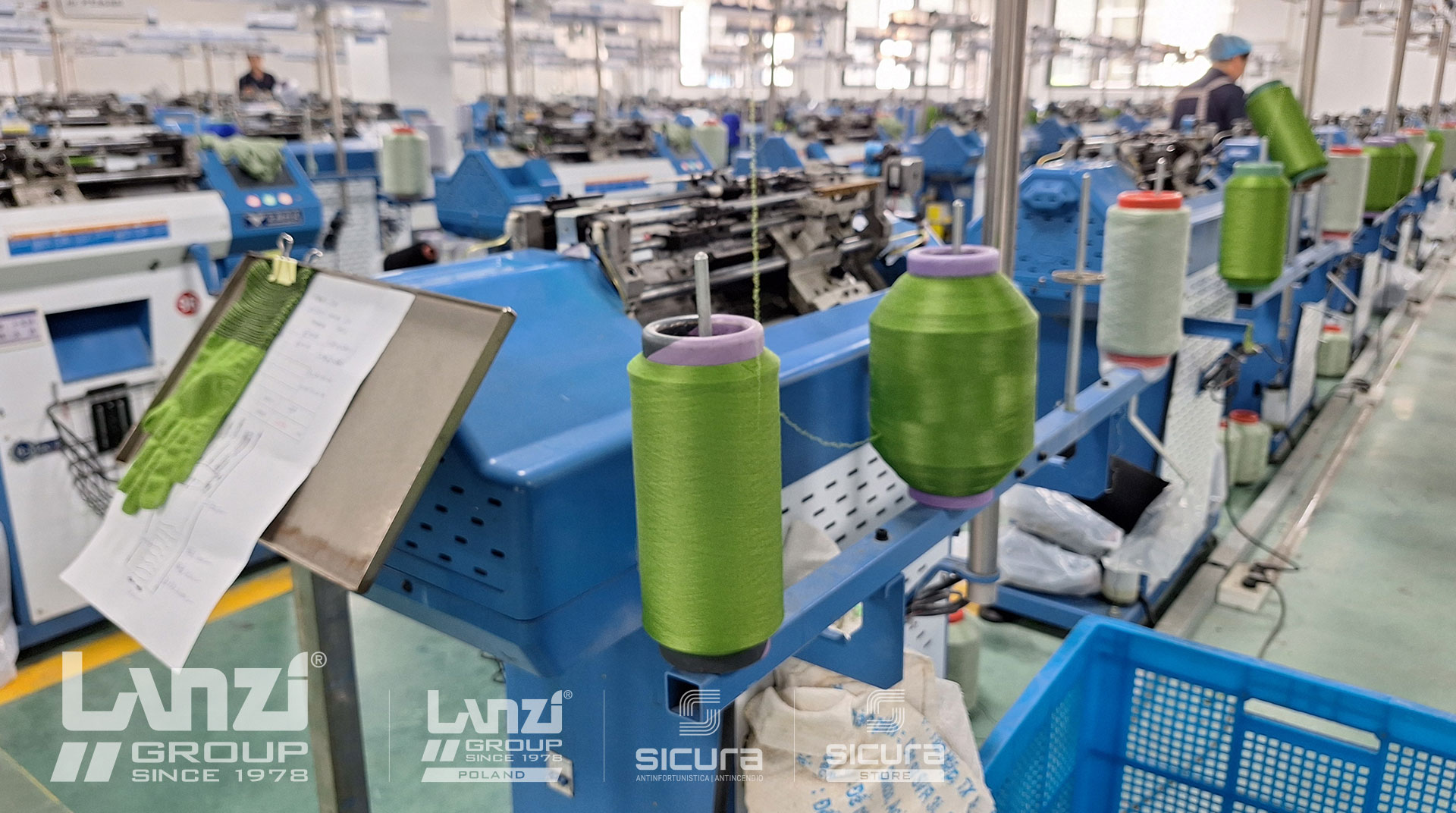
Seamless knitting of work gloves is a technology that emerged in the 1980s and amounted to one of the most significant innovations in the field of hand protection. Gloves produced with this technology are known as seamless gloves and continuous-thread gloves.
The knitting process for seamless gloves begins with the selection of appropriate yarns. The yarns can be made from various natural and synthetic materials, including cotton, bamboo, polyamide (nylon), polyester, para-aramid, HPPE and others, depending on the specific protection and comfort requirements to be met.
This production method uses advanced automated flat or circular knitting machines to create gloves that ensure a higher degree of comfort, dexterity and protection than is afforded by traditional gloves made by cutting and sewing.
Flat knitting machines (for gloves) or circular knitting machines (for sleeves or clothing) are equipped with finely calibrated needles and weave the yarns into a continuous fabric that forms the glove lining or the semi-finished glove. .
How are the gloves made thinner or thicker?
It depends on the number of needles per inch (25.4 mm) in the needle bed of the machine: this value is referred to as “gauge” or “fineness”. The higher the number of needles, the finer the yarn that can be used and, as a result, the finer the glove produced.
At present, there are machines with 7, 10, 13, 15, 18 and 21 needles per inch: gauge 7 corresponds to a low fineness (thicker gloves), while gauge 21 corresponds to the highest level of fineness (very thin gloves). The introduction of a new fineness of 24 is also being studied.
Furthermore, machines of different sizes have to be used (with the same number of needles) depending on the size of the gloves to be produced.
Production steps:
Seamless work gloves offer many advantages over traditional stitched gloves:
Thus, the knitting of work gloves embodies a perfect combination of technological innovation and practical functionality. Thanks to advanced machinery and the ability to select and combine different yarns, it is possible to produce high-performance gloves. These gloves are designed to meet a wide range of requirements in terms of protection, comfort, and precision.The absence of seams not only improves the product's ergonomic design and service life, it also allows for a high degree of customisation, making this personal protective equipment an ideal choice for many industrial sectors. The ongoing evolution of knitting technologies also points to future improvements, with increasingly sophisticated and targeted solutions.
For more information on the yarns used in work gloves, write to marketing@lanzigroup.com.